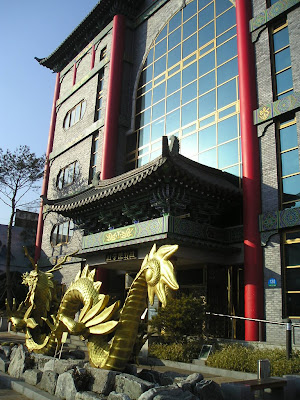It may be at the top of a big set of stairs, but even I'm not so lazy to let that put me off taking the trip up to the back of Chinatown to check out Jayu (Freedom) Park.
Half-way up the first set of stairs, with another set to go through the gate, time to take a photo and use the short break to recuperate (and once more
temporarily swear off the double servings of galbi)...

The park itself is probably best served by a springtime photo blog, however a raised pavillion perched on the edge of the hillside immediately behind Chinatown affords some rather good views of the main port area of Incheon.

The building almost dead centre in the following shot is the offices of the
Incheon Ilbo, the main daily newspaper in the city.

A more general view of the area, and beyond.

Cranes at the harbor, and the Incheon Jungbu Police HQ building in the foreground.

The large white building is the Paradise Hotel, with Wolmido Island in the background.

Not the most photogenic of areas, but interesting all the same.
One man who watches over the scene daily is Douglas MacArthur, the US army general who led United Nations coalition forces in the early stages of the Korean War. His statue has watched over Incheon city since its erection in 1957, and is located in a garden that appears to have been very recently renovated.


Much more of the Lunar New Year weekend photofest to come, at least if/when the blog starts getting busier.
































